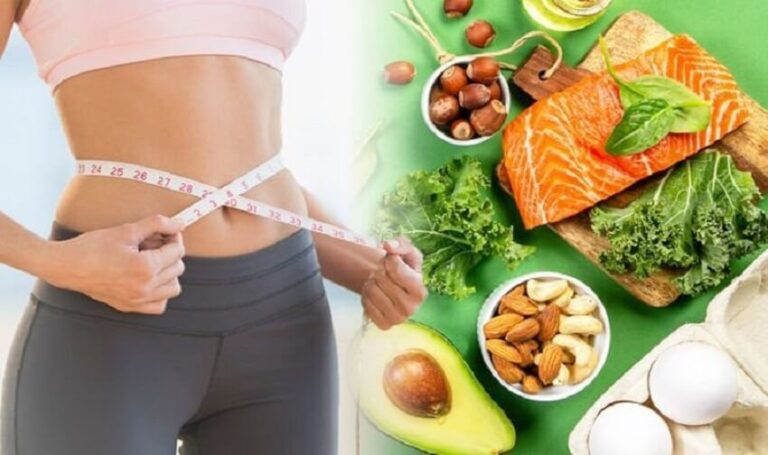The ketogenic diet is naturally deficient in gluten. Still, if you don’t have gluten intolerance or celiac disease on keto, you don’t need to avoid low-carb gluten-containing products—especially those containing small amounts, for example, soy sauce, which is made from fermented wheat.
Instead, people who do have gluten intolerance or celiac disease should strictly avoid gluten, whether they follow the ketogenic diet. In these cases, the amount of gluten allowed in your diet largely depends on your degree of intolerance.
Read on to find out what each regimen consists of, their differences, and what an example of a ketogenic diet menu would look like without tacc.
RELATED:
What is a gluten-free or tactic-free diet?
A gluten-free diet is a necessary eating plan for people with celiac disease or gluten intolerance, as the acronym without a tactic means without wheat, oats, barley, and rye. It is also a reference to the fact that it does not contain the main foods that have gluten or its derivatives.
A tactic-free diet is not a weight loss diet or an option but an alternative way of eating so as not to experience the possible adverse side effects of ingesting gluten.
People with celiac disease react very strongly against gluten and should follow a 100% gluten-free diet to alleviate their symptoms and improve overall health. This is estimated to represent approximately 1-2% of the general population in developed countries. (1)
Remember that gluten is a group of proteins found in wheat, barley, and rye. Gluten itself is not a type of carbohydrate, but it is found primarily in carbohydrate-rich foods.
And a ketogenic diet?
The ketogenic or keto diet is an eating plan where one group of foods is reduced: carbohydrates. It emerged as an eating plan for people who have epilepsy, although it is currently used to lose weight.
In this diet, the protein proportions are moderate; it is high in fat and very low in carbohydrates. This ratio of macronutrients allows the body to shift into ketosis, which will enable it to use fat as an energy source.
For most people to stay in nutritional ketosis, they must cut back on carbohydrates, including wheat, barley, or rye.
Differences between one and the other
The difference is that a gluten-free diet is just that: removing gluten, and in many cases, it is high in carbohydrate foods, for example, rice.
The ketogenic diet reduces carbohydrates to 25-50 net grams per day, and gluten-free or gluten-free foods can be included within this amount.
So it is essential to know that most gluten-free recipes are not keto-friendly, and some keto recipes may also have gluten.
Given that carbohydrate restriction benefits almost all people with insulin resistance, metabolic syndrome, or type 2 diabetes, and the number of adults with these pathologies increases at a rate of 5-8% per year in the world (2); the benefits of carbohydrate restriction could have a much broader application than a gluten-free diet.
Gluten-Free Ketogenic Diet (tacc) – Sample Menu
Cutting carbs can be a proper weight-loss strategy, and many people need to eat tacos-free, so below, you will see a menu with examples of gluten-free, tacc-free keto foods.
- Monday: Lunch – Zucchini spaghetti with bolognese. Dinner – Salad with spinach, tomatoes, bacon, and cheese
- Tuesday: Lunch – Turkey Chicken Sandwich with Gluten-Free Keto Bread, Dinner – Chicken Stroganoff with Cauliflower Rice and Vegetables
- Wednesday: Lunch – Tuna salad with green beans, tomato, hard-boiled egg, and lettuce. Dinner – Carpaccio of mushrooms with Parmesan cheese.
- Thursday: Lunch – Spinach omelet with buckwheat, arugula, and mushrooms. Homemade burgers with boiled vegetables.
- Friday: Lunch – Baked salmon with avocado, gluten-free cheese, and cherry tomatoes. Dinner –French omelet salad with olives, tomato, cucumber, and flax seeds.
- Saturday: Lunch – Meat strips with a Mediterranean salad. Dinner – Chicken wraps (gluten-free version)
- Sunday: Lunch – Keto zucchini with gluten-free ham casserole. Dinner – Broccoli, Leek, and Parmesan Cream
For when you’re hungry between meals, here are some gluten-free and keto snacks:
- 15 g of fruits or seeds
- Cheese with olives
- 1 or 2 hard-boiled eggs
- Dark chocolate 75% cocoa or more
- Low carb shakes – you can use almond milk, green vegetables, red berries
- Unsweetened skimmed yogurt
- Celery sticks with guacamole
- Blueberries with cream
RELATED:
ABSTRACT
The ketogenic diet is not gluten-free, but it generally doesn’t contain a lot of foods with tacc.
However, most keto diets will likely use some grains in small amounts, such as bulgur or couscous, which are added to salads. These grains are not gluten-free. Many condiments are not gluten-free, and some cheeses are not.
If you must follow a gluten-free diet for health reasons and want to switch to a gluten-free ketogenic diet, consult your doctor first.







